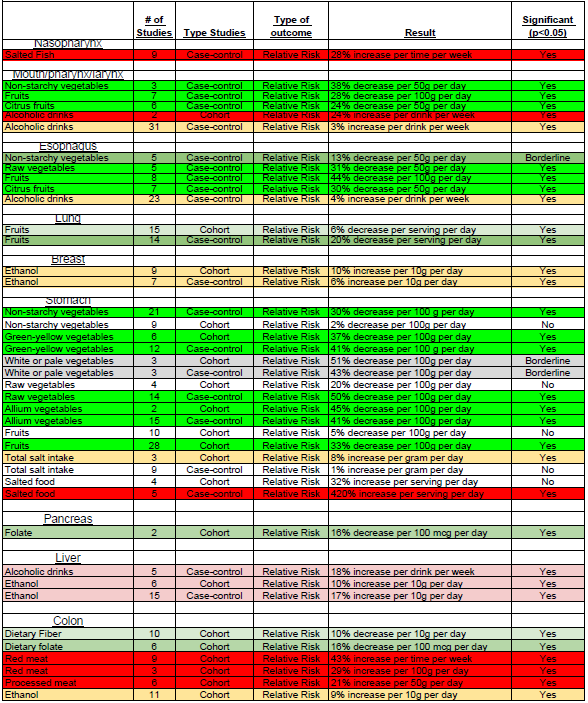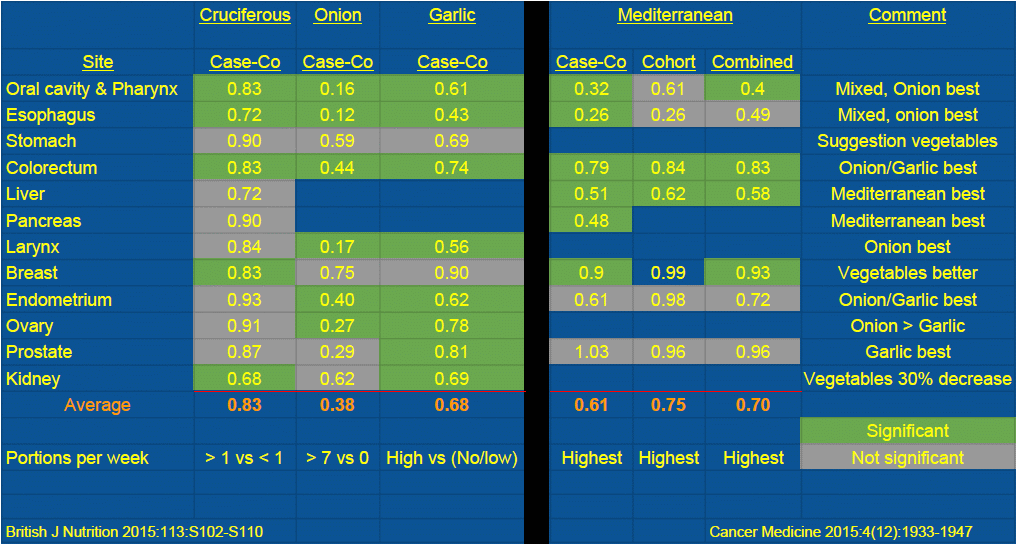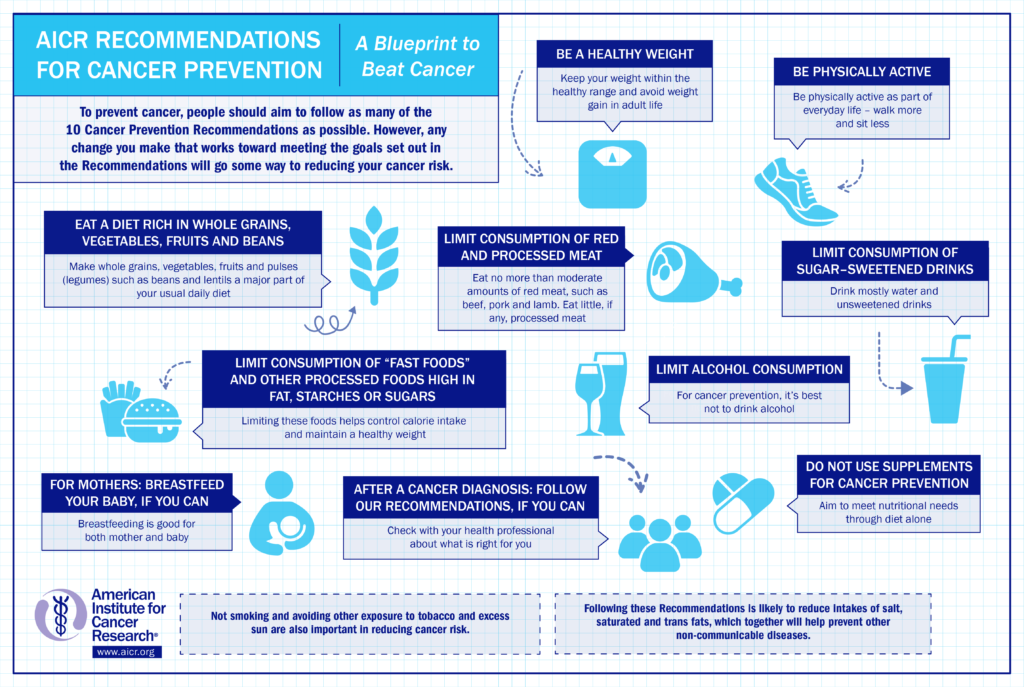Diet and Cancer
The American Institute for Cancer Research has a good graphic which summarises their recommendations for cancer prevention (bigger copy here):
In addition the AICR has an interactive cancer risk matrix (here) which covers many different risk factors for different cancers and even tells you how strong the risks are.
I came across an American Cancer Center with a simple way to calculate your risk of cancers of the bladder, breast, cervix, colon, kidney, lung, melanoma, ovary, pancreas, prostate, stomach, and uterus. The National Cancer Institute also has a tool to calculate breast cancer risk here. Simple steps to reduce your overall risk of cancer are at this interactive site.
The American Institute of Cancer Research (AICR) has a good database of foods and the cancers they fight (similar list here ).
To see the big picture, I would encourage you to start at my main page here.
An obvious question after looking at lists of foods and cancer is whether all vegetables are as each other at preventing cancer. I came across a very interesting study (video here) that looked at the relative effectiveness of 34 different vegetables on 8 different human cancer cell lines. I also found similar studies on fruits, berries, mushrooms, and nuts. The American Cancer Society ties this information together in their Guidelines on Nutrition and Physical Activity for Cancer Prevention. A lot of research is being done to understand the mechanisms by which diet can prevent cancer, and some sites have continuous updates on the latest conclusions about diet and cancer that you might find useful (see also here).
As this recent article (October 2018, video here) shows, there is growing evidence that those who consume organic produce also have a lower risk of cancer. Another excellent resource on diet and cancer is the Physician’s Committee for Responsible Medicine (PCRM) who have a series of articles here.
Of course, diet is only part of the picture when it comes to preventing cancer:
- List of nine practical tips for consumers from the Environmental Working Group (EWG).
- Dirty dozen chemicals contributing to cancer (EWG). for the bigger picture (more links here).
- A large study just published looked at the association of physical activity and the risk of 26 types of cancer.
In 2007 the World Cancer Research Fund published a landmark 457 page report entitles “Food, Nutrition, Physical Activity and the Prevention of Cancer: a Global Perspective“. This resulted in Ten Recommendations for Cancer Prevention. I have made a table which summarizes their findings in different cancers (see below):

Since that time, the WCRF has initiated a continuous update project so that the latest evidence can be summarized. To learn about interpreting studies looking at diet and cancer, see here.
The way you prepare certain foods can greatly enhance (or lessen) their cancer-fighting ability. The American Cancer Society has some practical tips here and here. And here is a lovely 8 minute video on the ultimate anti-cancer salad.
A collection of articles on diet and cancer from the Plantrician project is here.
For those interested in specific cancers, please click on the links below:
- Breast cancer
- Prostate cancer
- Colon Cancer
- Here is an excellent overview (Produced by Plant Based Health Professionals UK).
- Also see ‘Six Steps to Fight Colorectal Cancer‘
- Report on incidence of cancers in Canada by stage in 2018 here.
Below is a summary I have made from some observational (case-control) studies (& here) of dietary components (cruciferous vegetables, onions, garlic and the Mediterranean diet) and the odds ratio (OR) for different cancers. If there was no effect, the OR would be 1. If the OR is less than one, it means that the exposure (in this case a specific food or diet) is associated with a lower risk of the outcome (in this case cancer at a certain site). I have highlighted in green those results which are statistically significant.

As you can see from the above data, cruciferous vegetables significantly decrease the risk of esophageal cancer, but onions & garlic look like they do so to an even greater extent.
The Environmental Working Group has come out with a very nice Nutrition Calculator for Cancer Prevention – it takes about a minute to fill out and then gives you a nice graphical representation of what you are adequate or deficient in. It also breaks down your intake of beneficial phytochemicals and explains them further. Here is a brief video from the American Institute for Cancer Research on the role of sugar in cancer.
And here is a fascinating 4 min video on diet, obesity, IGF1 and cancer.
I recently (September 2019) gave a talk on ‘Food as Prevention for Cancer’ which might be of interest (see here and remember to push the ‘Play’ button on bottom left of screen) – the talk start after 3 minutes of mindfulness.
